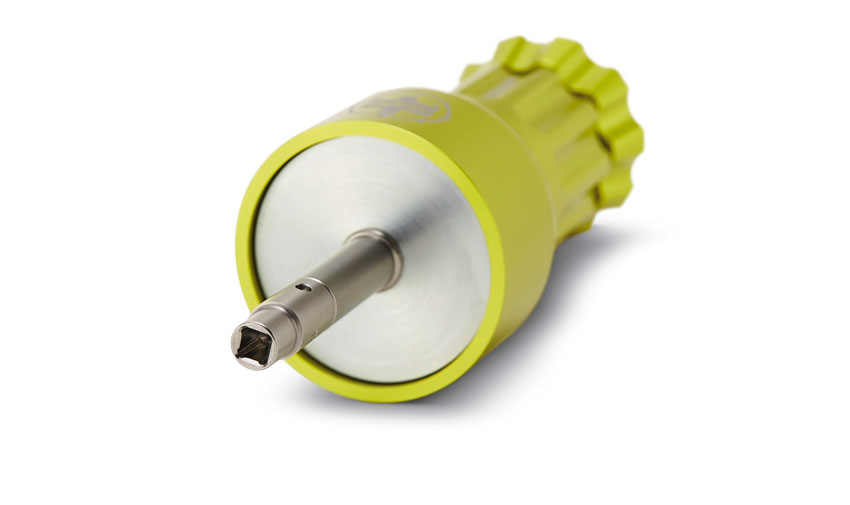MusicRadar Verdict
More than just an exact and fast tuner, TekTuner is a bullet-proof tool for personalising your sound and for building a library of tuning options.
Pros
- +
Great idea, well executed. Solid build quality.
Cons
- -
Prices itself out of the market, for most.
MusicRadar's got your back
Drummer, producer, composer and singer Errol Kennedy of '80s hit-makers Imagination ('Body Talk' etc) has come up with this solution, dubbed the TekTuner, to the drummer's thorniest problem of consistent drum tuning.
Teaming up with sympathetic sound engineer Jimmy Sarakis, Errol enlisted engineer Gil Smith to work out the manufacturing details and, several attempts later, we have this finished prototype.
Build
TekTuner is built like a battleship. Fitting the hand perfectly, it's roughly 16cm long overall with a diameter of 5.5cm and weighs around 450 grams (1.15lbs). Construction-wise it is a lathed aluminium/ steel tuning apparatus, finely calibrated to measure the exact torque applied to your tension rods. Choose from red, black, purple or blue, with other anodised colours to follow (the review yellow-green is a pre-production unit). You can also get your name engraved on it.
Hands On
"When the tension rod reaches the dialled-in number you feel a click or 'bump'"
Like your normal key you use the Tek Tuner to tighten and un-tighten your heads. Basic operation is simple. There is a black 'push to set' button in the top, knurled 'crown'. Pushing down releases this top section to turn. In the gap between top and middle sections a window displays numbers in four rows, from 0 to 40 via half-steps. Turning clockwise the numbers increase (and vice versa), and on releasing the button the tuner locks at the displayed torque setting.
Slacken your heads just below the tension you are aiming for and then tune up. When the tension rod reaches the dialled-in number you feel a click or 'bump', after which the TekTuner won't apply further torque, even if you keep turning. There's a Quick-Settings Guide for different sizes and types of head that gets you up and running. From there you gradually work out your preferred tensions. So, for example, a small tom batter might want '221⁄2' and a snare drum somewhat higher, around '30' to '35'.
From here you can build up a library of suitable settings for different head types, different drum sizes and tuning styles. You feel much more confident and in control, no more aimless tapping about, driving your bandmates nuts. You can even do a silent re-tune between sets.
Want all the hottest music and gear news, reviews, deals, features and more, direct to your inbox? Sign up here.
